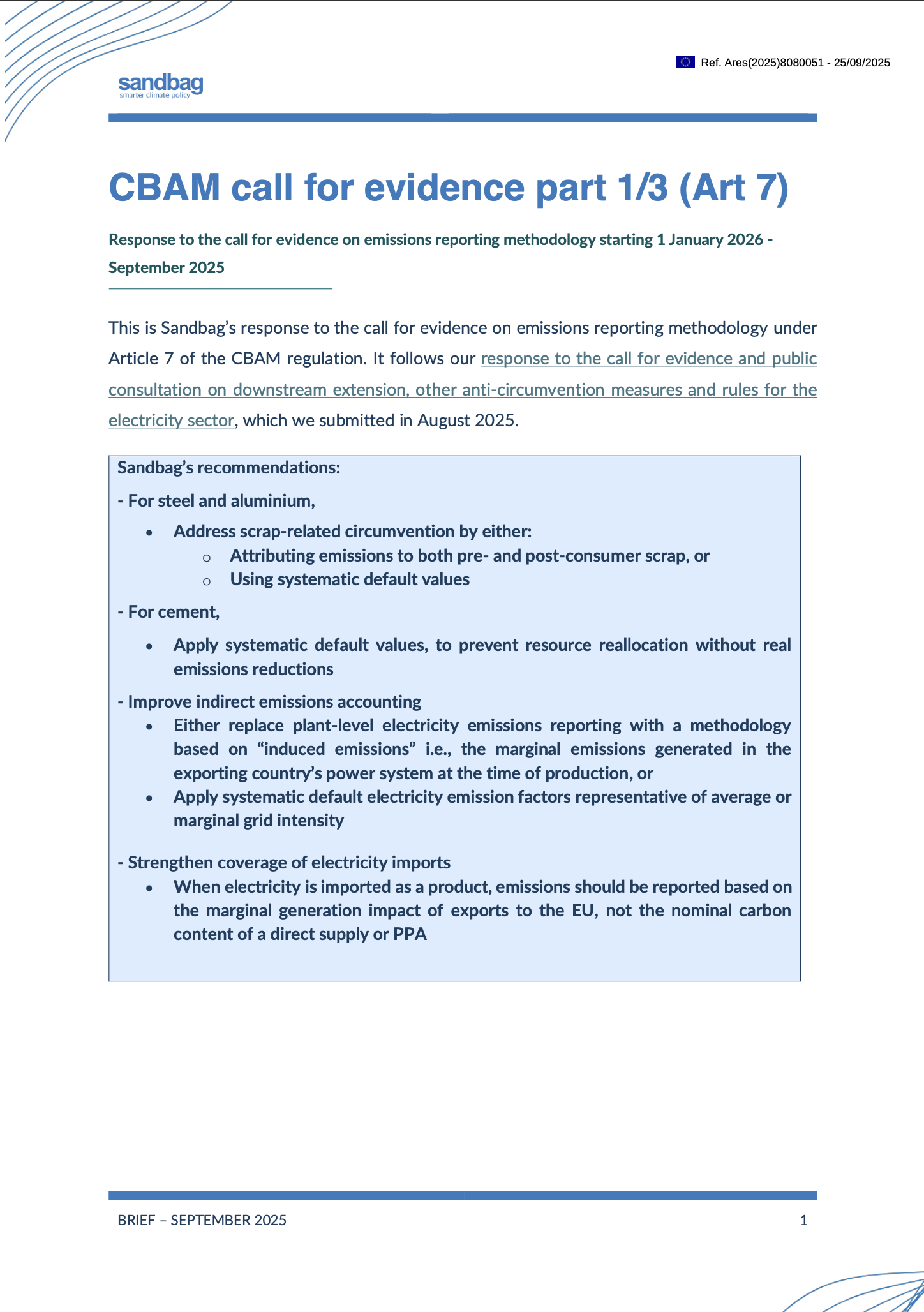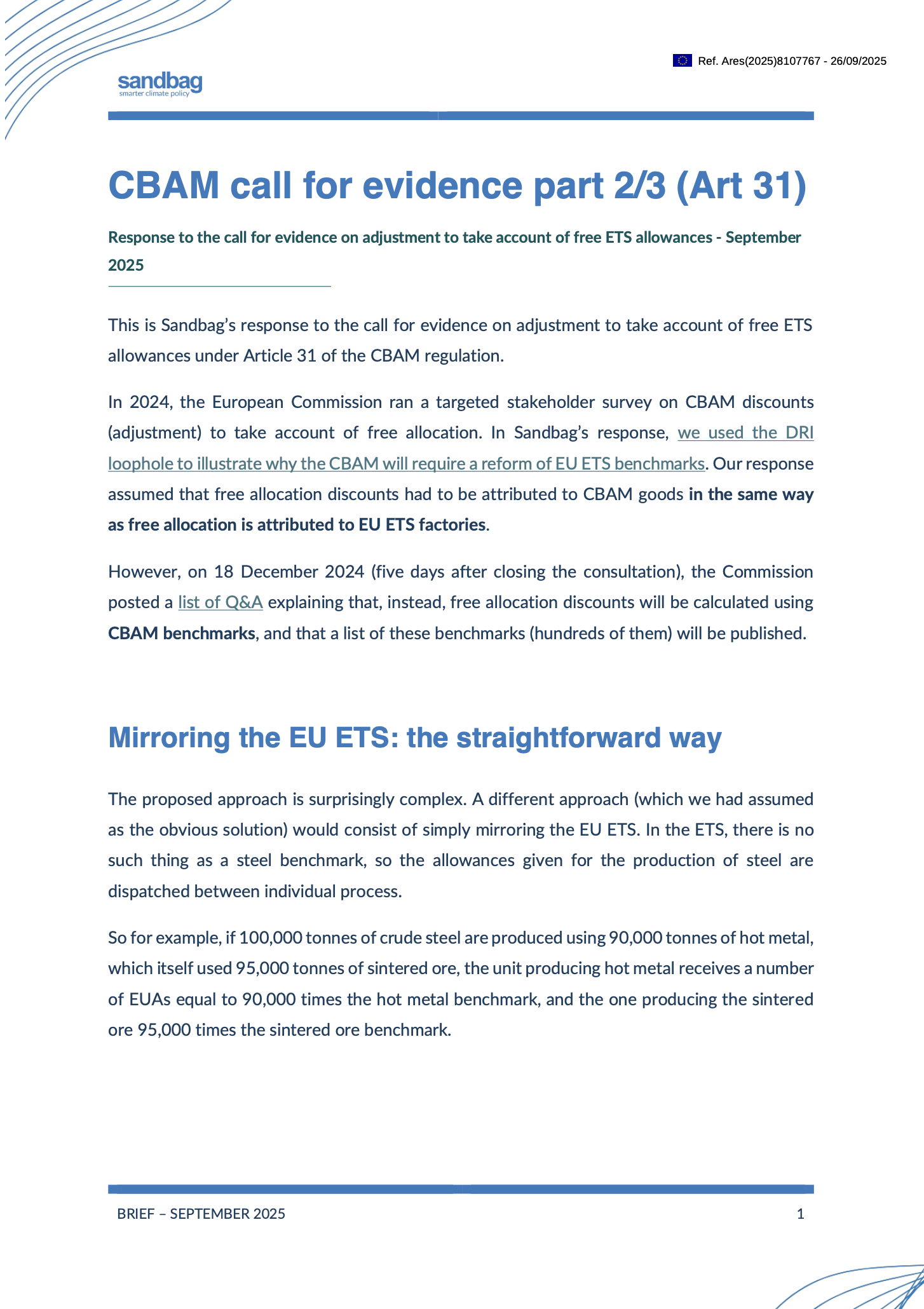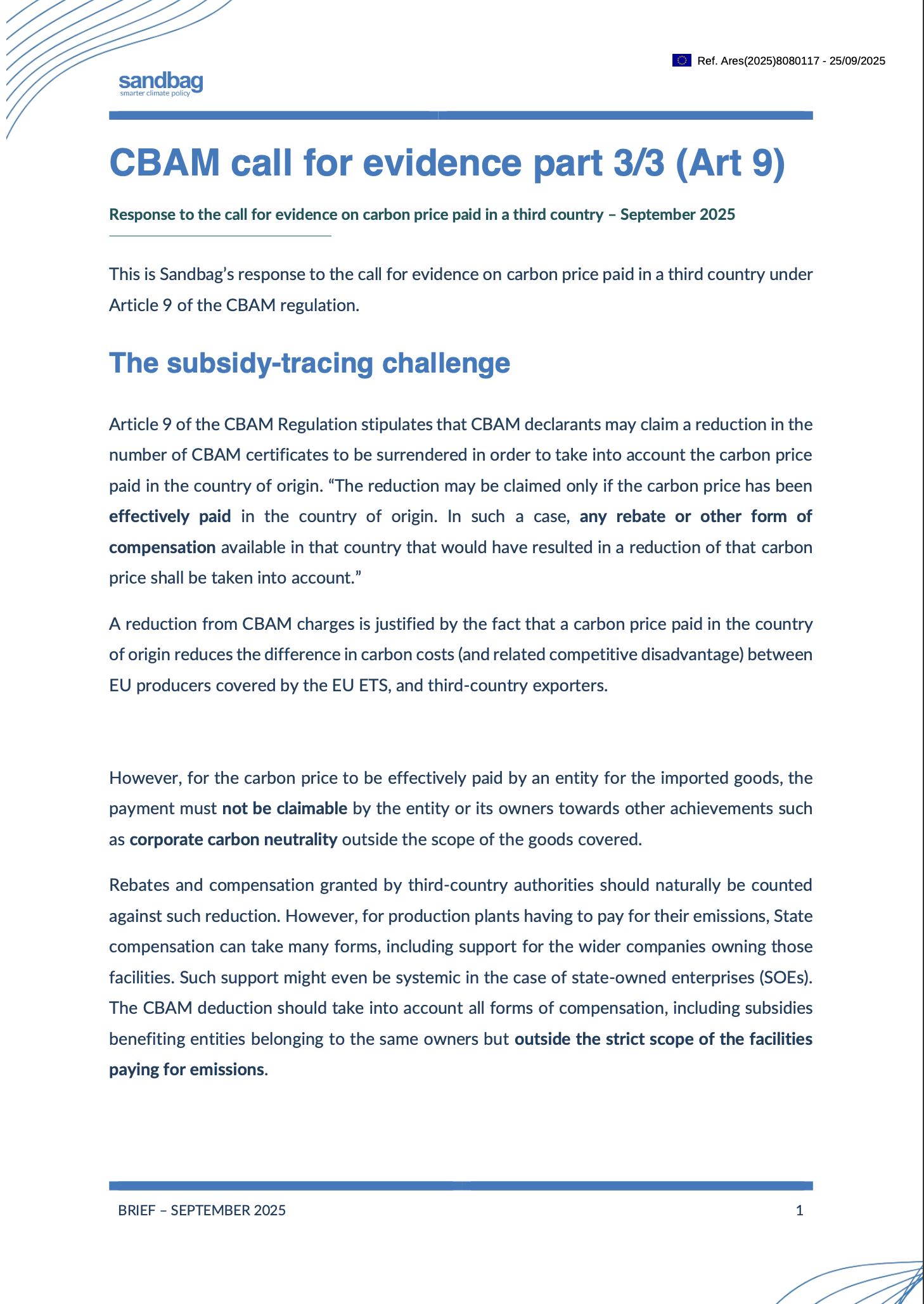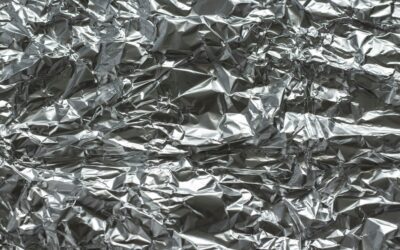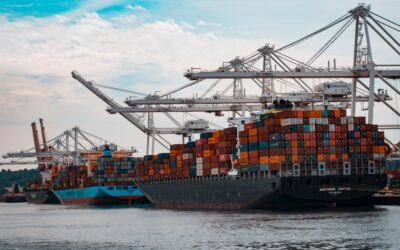The EU’s Carbon Border Adjustment Mechanism (CBAM) aims to ensure that imported goods face the same carbon costs as those produced in Europe.
As CBAM enters its next phase, the European Commission asked for input on three areas:
- Article 7 – Emissions reporting
- Article 31 – Adjustment to take account of free allocation
- Article 9 – Carbon prices paid in third countries
Sandbag responded to each consultation, highlighting risks that could weaken CBAM’s impact and offering practical solutions.
Our main recommendations
- Article 7 (Emissions reporting): Avoid resource shuffling by using induced emissions and systematic default values for steel, aluminium, cement, and electricity imports.
- Article 31 (adjustment for Free allocation): Move to product-based free allocation, ensuring equal treatment between EU and imported goods.
- Article 9 (Carbon price paid abroad): Ensure deductions only apply where carbon prices are paid for the production of goods, taking into account all support received by the production plant even not for carbon.
Related publications
Mind the Scrap: Ignoring Embedded Emissions Puts the CBAM at Risk
Sandbag’s submission to DG TAXUD’s Informal Expert Group on the Analytical Methods for the...
Lost opportunity of carbon market reform leaves a lot to fix in ancillary laws
On 13 December 2022, the European Commission, Council and Parliament reached a provisional...
An Export Solution for a Faster CBAM Phase-in
A Carbon Border Adjustment Mechanism (CBAM) has been proposed by the European Commission as an...

